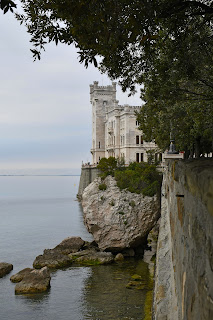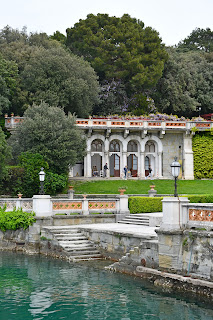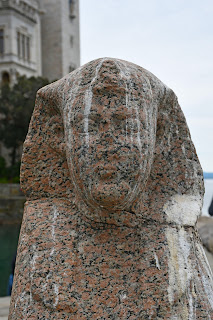Balkans Road Trip: Day 3 – Postojna, Predjama, and Trieste
We departed Ljubljana in the morning after buying breakfast (and some bread and cheese for a quick lunch) at a nearby store. I also grabbed sunscreen, as my bottle was too big to pack in my carry-on.
We arrived at Postojna Cave well before the 10 o’clock opening time. Since we realised we were making good progress as we drove down the highway, Yang bought our tickets online and we proceeded straight to the entrance. The tour was very well-planned. After we were let in, we were sorted into groups by language and led to a narrow unroofed train inside the cave. The ride was nothing short of spectacular. The train carried us through forests of stalactites and stalagmites, which zoomed by so close that I could not stop instinctively ducking.
As we followed our
guide through the caves, we kept marvelling at the giant dripstone formations
all around us. I have been to a few caves before, but these must have been the
most impressive thanks to the sheer number and proximity of the calcite
creations. The tour guide told us it takes about a hundred years for one centimetre
of a stalagmite to grow. That means a mere half-metre stalagmite would be as
old as recorded human history.
In an aquarium close
to the exit, we were also shown some cave salamanders. These pigment-less
amphibians were among the first animals discovered to thrive in the absence of
sunlight, and they can live to a hundred years of age. As apex predators in
their ecosystem, they have excellent hearing and a great sense of smell, but
they are completely blind.
About ten kilometres
away from Postojna Cave is Predjama Castle, a sight noted for being built over
an open cave. The castle was once the haunt of the Slovenian folk hero Erazem
Predjamski, who weathered a heavy imperial siege of Predjama for over a year. The
system of caves kept him supplied with food from the outside world, and the
defenders were able to gather water dripping from the ceiling in one of the caves.
Indeed, it is said they threw half an ox and a basketful of cherries to the
enemies just to taunt them. However, Erazem’s luck ran out when a treacherous
servant advised the besiegers to attack his washroom, and Erazem died buried in
debris over his own poo.
We ate our sunflower
bread and cheese at the parking lot before departing again. Our destination
this time was Miramare Castle in Trieste, a complex built for Emperor
Maximilian of Mexico and his wife, Charlotte of Belgium. The royal was a descendant
of Holy Roman Emperor Charles V, under whose reign Spain subjugated the Aztec
Empire, but Maximilian ruled Mexico for only three years before his execution
by republican forces. Nevertheless, the decorations at the castle make plenty
reference to this short stint with numerous depictions of the Mexican eagle.
Equally worth seeing are the beautifully tended gardens, which at the time of
our visit were abloom with spring flowers.
Our descent to
Miramare was a breakneck affair, with our GPS directing us straight down a
series of steep and narrow alleyways in the precincts of Trieste. Fortunately,
we did not encounter many cars heading in the opposite direction and when we
did, they noticed our foreign license plate and thought it wiser to back out.
From Miramare, the roads to the centre of Trieste were much broader and more
navigable, and we found parking at the pier by our accommodation.
We spent the late
afternoon walking around Trieste and – in my case – ill-advisedly consuming a
whole pizza at a restaurant by the Canal Grande. Since our accommodation was in
the south of the city, we began our tour by walking northwards to Arco di
Ricardo, a 1st century BCE Roman arch that stands perpendicularly
against a city block. From there, it is a slight walk uphill to the Cathedral
of San Giusto Martire, which has beautiful mosaics at the end of both aisles
and the main nave.
Walking down the hill,
we found ourselves atop the Roman Theatre, another ancient structure that
interfaces directly with the city. The stage connects almost directly with the
road that runs along this structure, and locals simply walk past it as tourists
flock around the rails to take pictures. From there, it was only a short walk
to the Serbian Orthodox Church of Saint Spyridon, whose tall roofs can be seen
from many parts of the city, and whose rich decorations rival those at the
Cathedral. The church is a reminder of Trieste’s mixed heritage as a city that
once had a significant Slavic population.
Eating dinner after
visiting the Church of Saint Antony was a good move. It allowed us to wait out
the slight haze that had been hanging above the coast, and we only emerged from
the restaurant at golden hour. The subsequent walk from the Canal Grande to
Piazza della Borsa and Unity of Italy Square was so beautiful that we lingered
on and wandered back along the coast to take a better look at the Verdi
Theatre.
























































Comments
Post a Comment